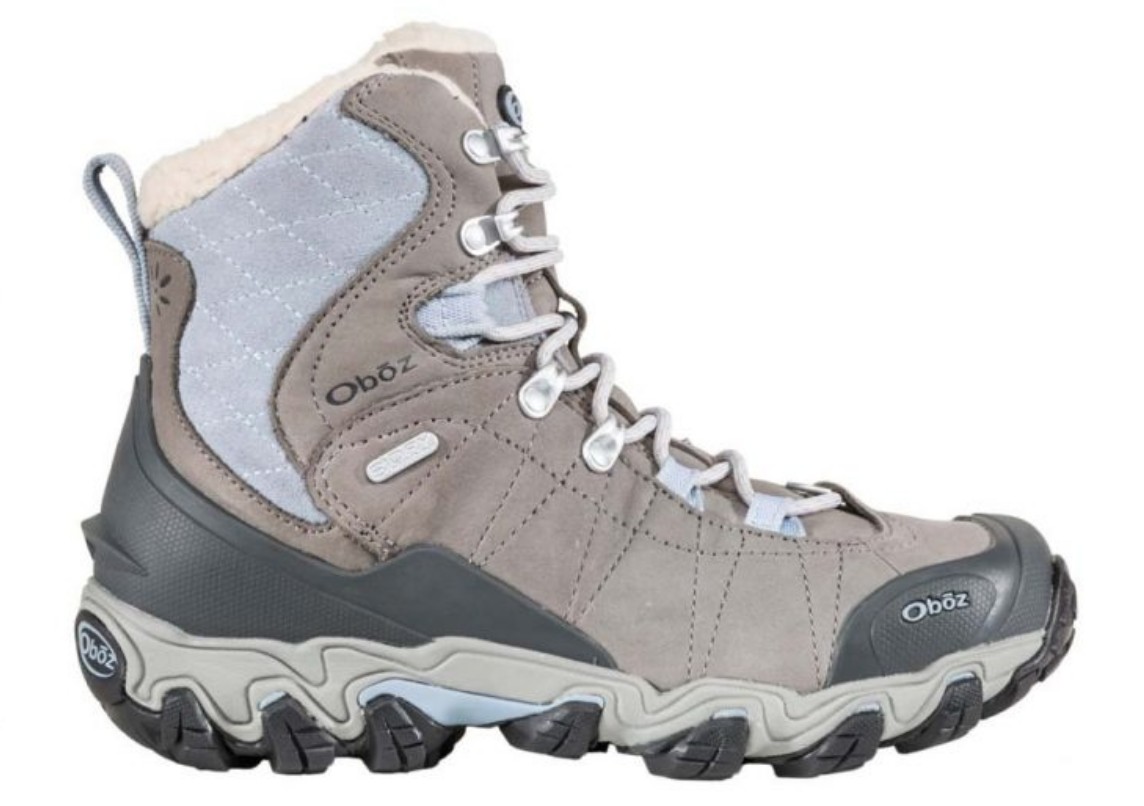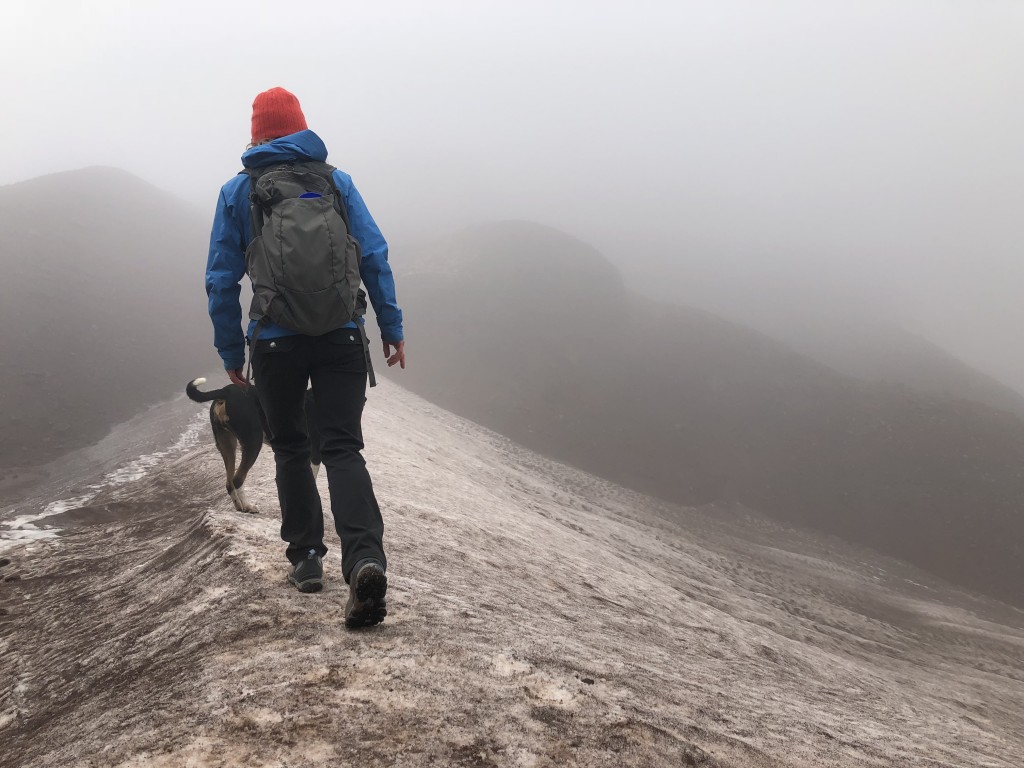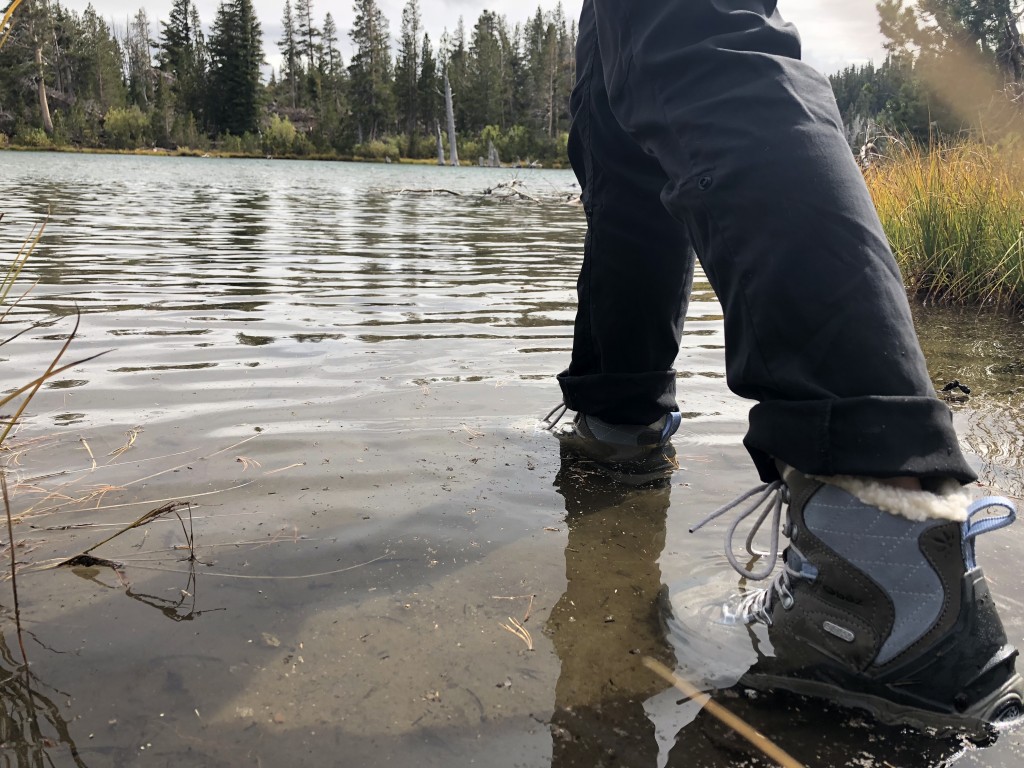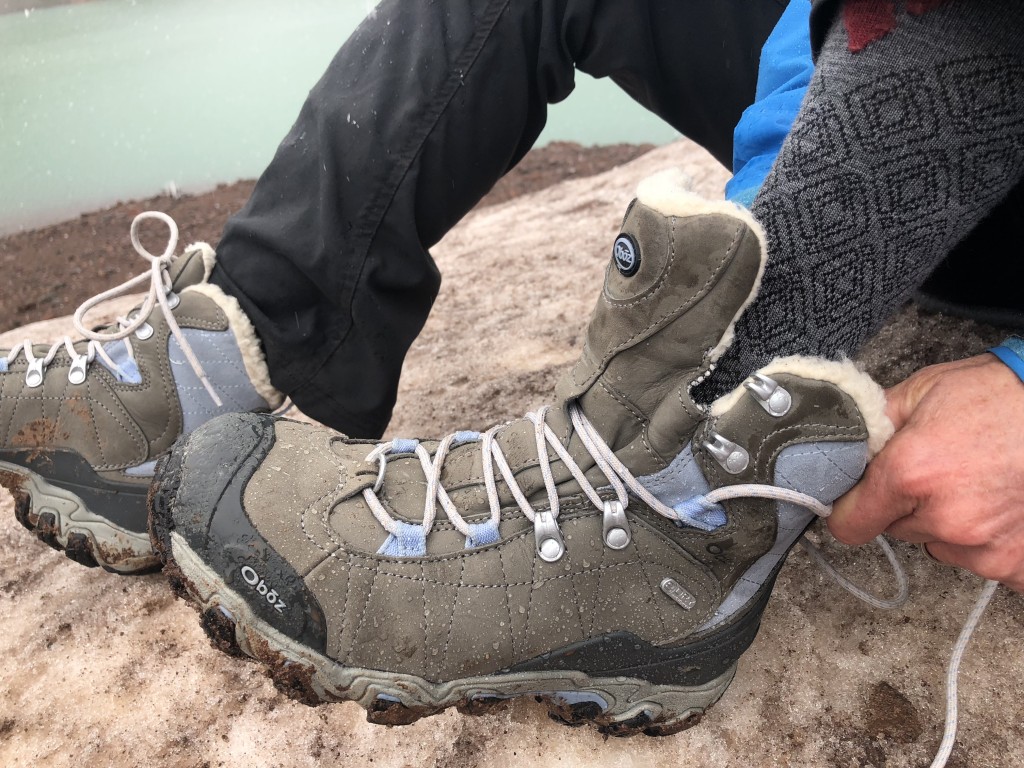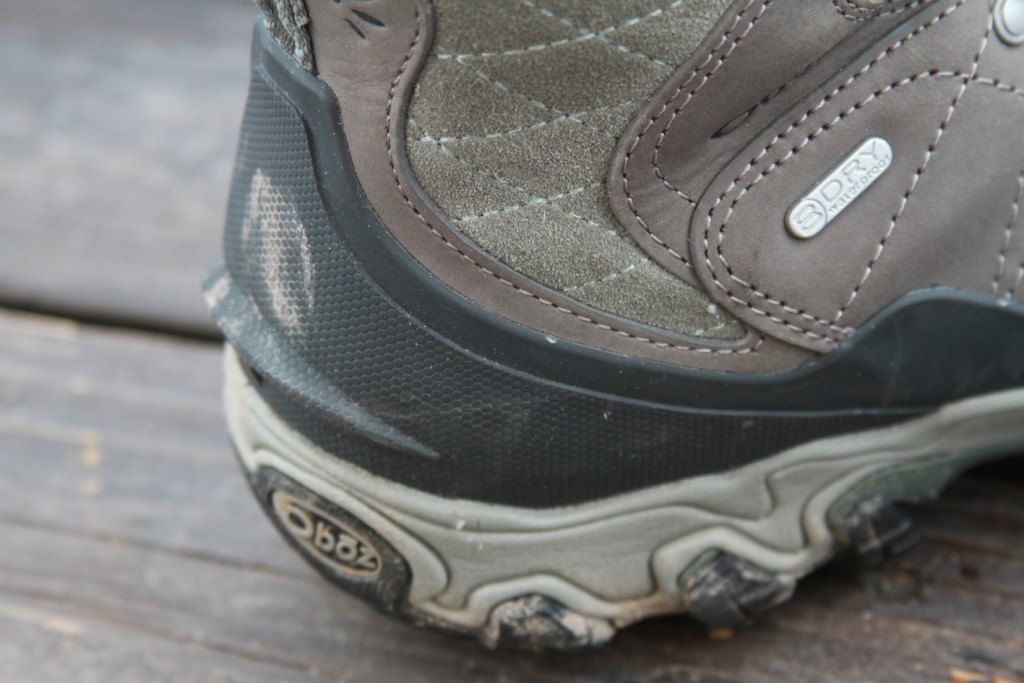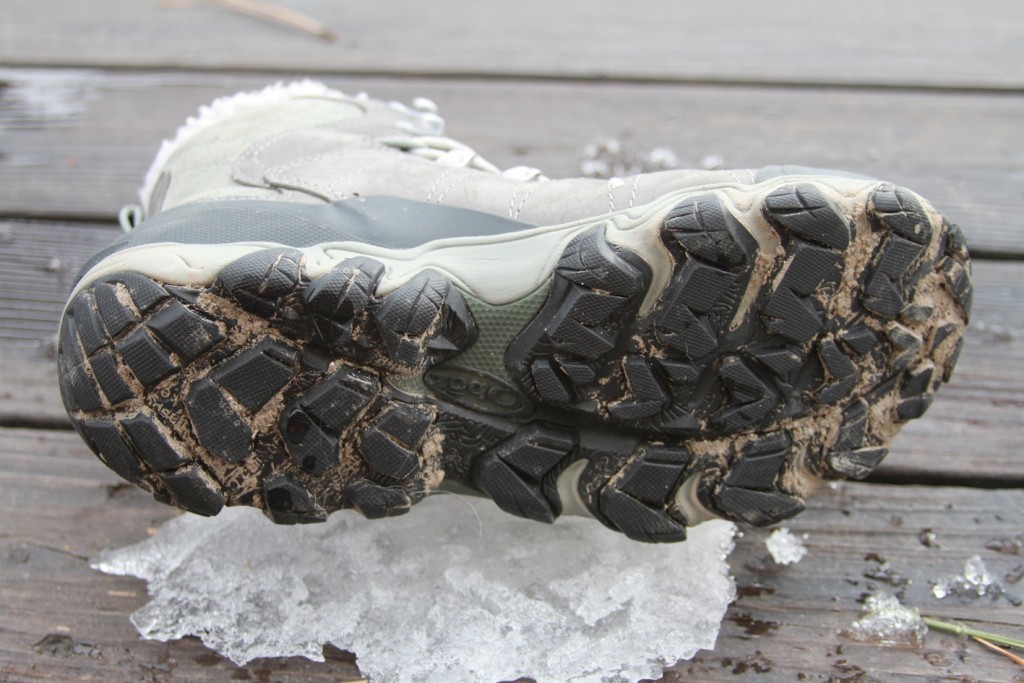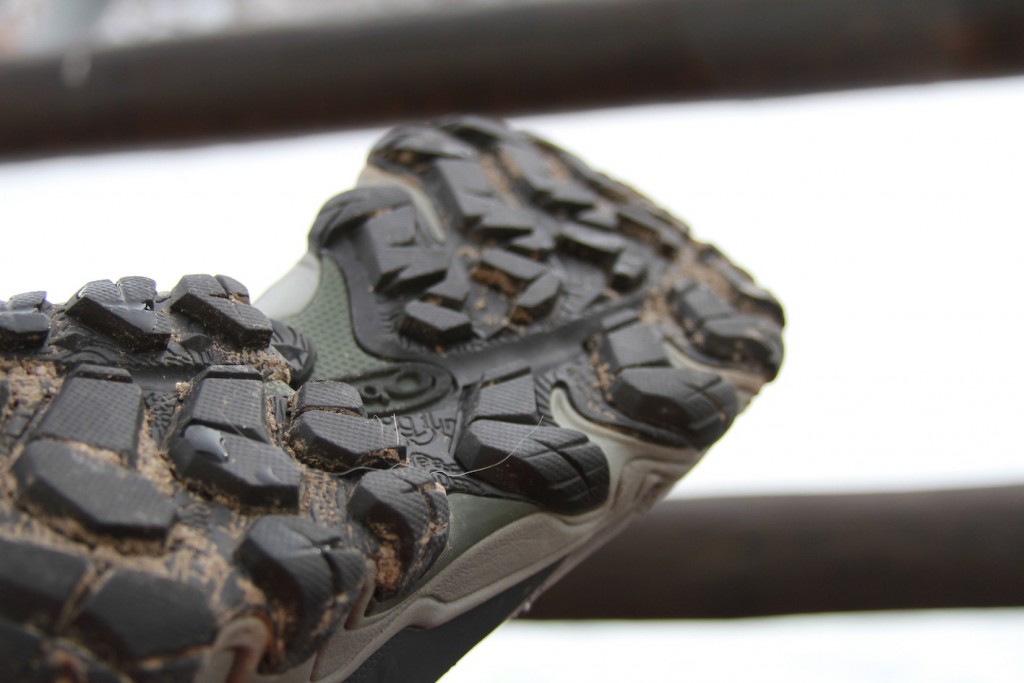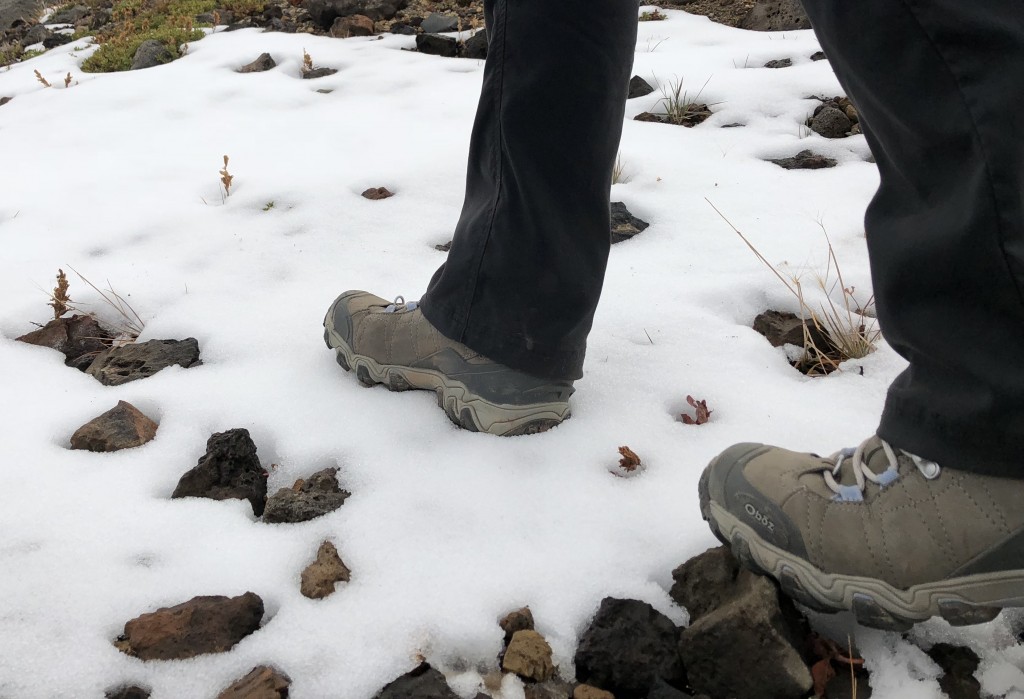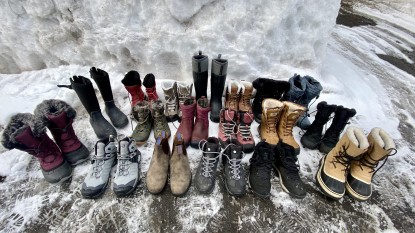Oboz Bridger 7" Insulated Waterproof Review
Our Verdict
Our Analysis and Test Results
The Bridger 7" Insulated boot is legit. We wore these winter hiking boots to the top of snow-covered volcanos and tested them for traction, warmth, and comfort. With a form-fitting shoe bed, cozy insulation, and great traction, it stands out as a very stable and supportive winter hiking boot. Like most winter boots, its performance on ice is subpar, while its short design doesn't do the best in deep snowdrifts. Add a pair of microspikes or gaiters to help combat these extreme surfaces and conditions and experience one of the best winter hiking boots we've tested.
Performance Comparison
Warmth
With 200 grams of Thinsulate insulation, this winter hiker provides excellent warmth for winter backcountry adventures. The Bridger boot was a top performer in our ice bath test, losing only 14.7 degrees over the course of 20 minutes. This makes us believers in the B-Dry and Thinsulate system. Indeed, it kept our toes super toasty during cold winter hikes and offers plenty of active warmth.
We found that this 200 grams of Thinsulate feels warmer than 200 grams of many other types of insulation. Consequently, this boot provides extra warmth with less bulk and kept us warm into colder temps. The lacing system locks in heat while the wool-topped collar adds coziness. The Bridger is fitted with a removable thermal insole that ensures your foot is warm underneath, and the rubber sole is thick and insulating from the frozen ground. The construction of the boot is quite breathable, which also adds to the other warmth, allowing moisture to vent through the fabric, keeping feet dry.
The wool pile topping on the cuff adds a little flair and provides a barrier against cold air. The lining is cozy and soft on the ankles and provides support for all-day adventures. Use this boot while hiking, snowshoeing, or simply running around town. We tested it in temperatures that dipped into the double negatives. Standing around, it's not as warm as burlier competitors, but while hiking, it is quite nice.
Weather Protection
During our waterproof test, we wore every boot in four inches of water in a cold alpine lake for 10 minutes. The nubuck leather upper of the Bridger proved to be 100% waterproof. In the depth test, it only let in water when we reached the cuff's height in six inches of water. It was also perfectly waterproof when hiking in sleet and wet snow for hours. Just as importantly, these boots breathe well. When we were working hard uphill, our feet didn't get soaked with sweat.
The suede is treated with DWR to help it repel water, and Oboz recommends treating the outside of the boot annually. While that helps water bead up at the surface, there is also a waterproof and breathable membrane sandwiched into the upper that truly keeps water out. This boot has you covered!
Still, the Bridger is short. While it lives up to it's 7" name at the front of the cuff, the back is a full inch shorter. This could be a problem for deep drifts, but snow pants or a gaiter can provide additional protection. If you are looking for a taller hiking-style winter boot, a 9-inch version of this boot is also available that will do better in super tall snowbanks.
Comfort & Fit
Of all the winter hiking boots we tested, the Bridger is the most comfortable. It has an engineered insole that keeps the feet in place while providing enough room to wiggle the toes in thicker socks. We never experienced pinching, hot spots, or cold toes, not even on the first hike! Women often have narrow heels, and this boot hugged ours comfortably with zero slip even on the steepest slopes. The insole provides arch support and is intended to keep the foot in a neutral position. All our testers agreed that the heel felt slightly lifted at first, and then we quickly forgot about it.
Oboz says the heel is shaped to a B-width while the toe box is a C-width, allowing for the extra volume in the toe box. Because hiking boot laces are so adept at adjusting for different foot shapes and sizes, these boots worked for testers with narrow to medium width feet. We suggest to size up this boot if you prefer wearing thicker socks. The toe box is wide enough but a little shallow for those with wider feet. That said, a half size up will accommodate a thicker sock and keep your foot warmer. If you're on the fence, size up. Overall, we are big fans of the comfort and fit of the Bridger, as it is supportive, comfortable, and perfect for winter trails.
Ease of Use
Any hiking boot with a dialed-in fit doesn't let you just kick it off when you get back to the house. They have to be untied, you may have to unhook the top two lace hooks, and you might even need to loosen the laces. That said, once untied, this boot opens up generously and is easy enough to slip on or off. As for getting the right fit, the lower lining means that getting the boot tied comfortably for a long hike is a piece of cake.
Traction
This boot has deep and varied lugs that dig into the snow and hold tight, even in steep, loose, and wet terrain. This boot has the deepest lugs of the boots we tested, and its winterized rubber stays grippy in a range of conditions.
We motored along with confidence in soft, slippery snow. Ice is a challenge, no matter the boot. In our ice traction test, the Bridger did not perform well. Unfortunately, the rubber composite stays rigid and does not wrap around the crystallized surface, repelling it instead. While it does better than other boots with even harder rubber composites, we recommend using a pair of microspikes if you find yourself on ice all the time. Otherwise, look at other boots with softer rubber composites that are “stickier” on the ice.
Value
This boot is in the middle price range of the hikers we tested. With the excellent support, warmth, and traction it offers, it will not let you down on your winter adventures. It scored highly in all metrics, and we feel it is worth the price. It is best for those looking for a hiking-specific winter boot.
Conclusion
The Oboz Bridger 7" Insulated Waterproof boot is an excellent winter hiking boot. While it is suited for cold backcountry adventures, it can certainly be used while walking the dog, shoveling snow, and all the rest. It offers great warmth and breathability that will allow you to tackle winter without a second thought.


